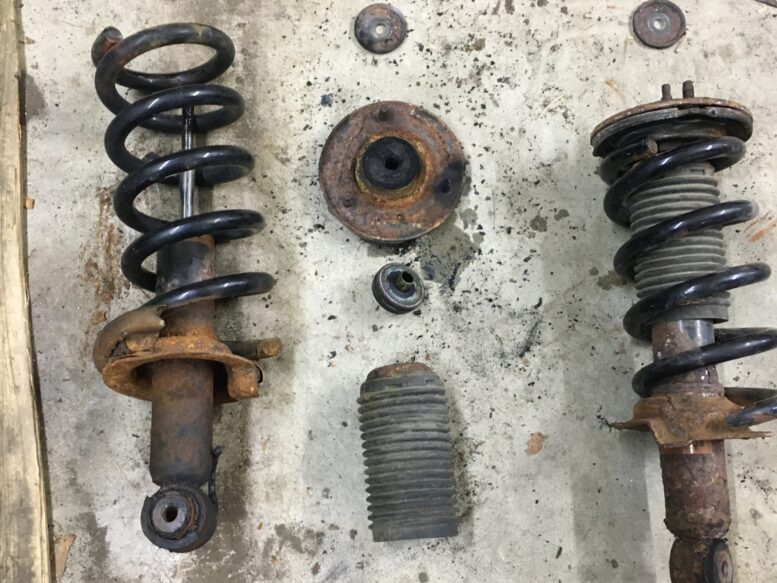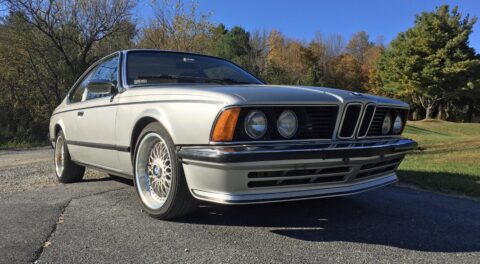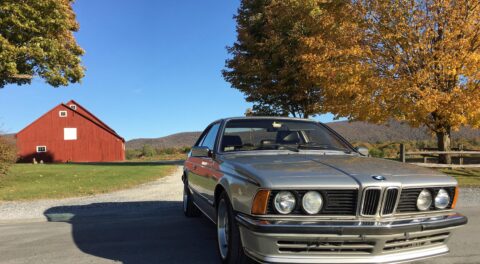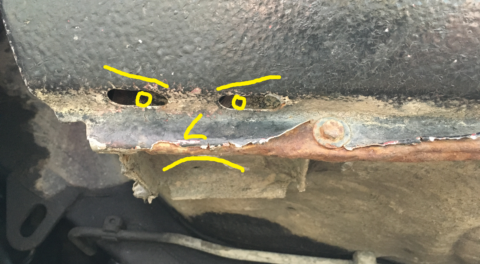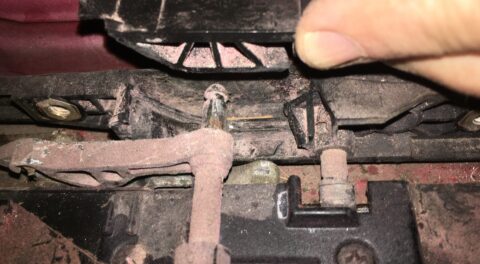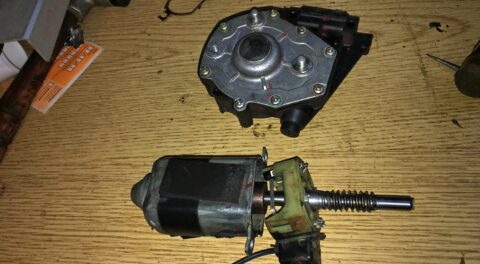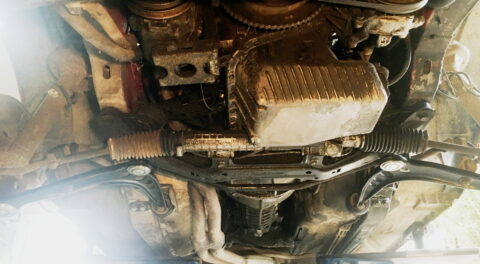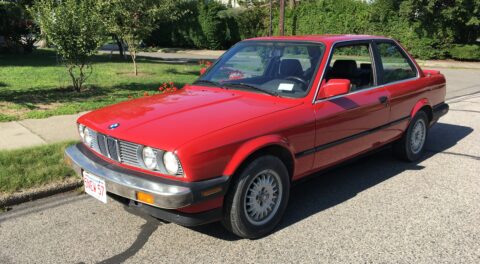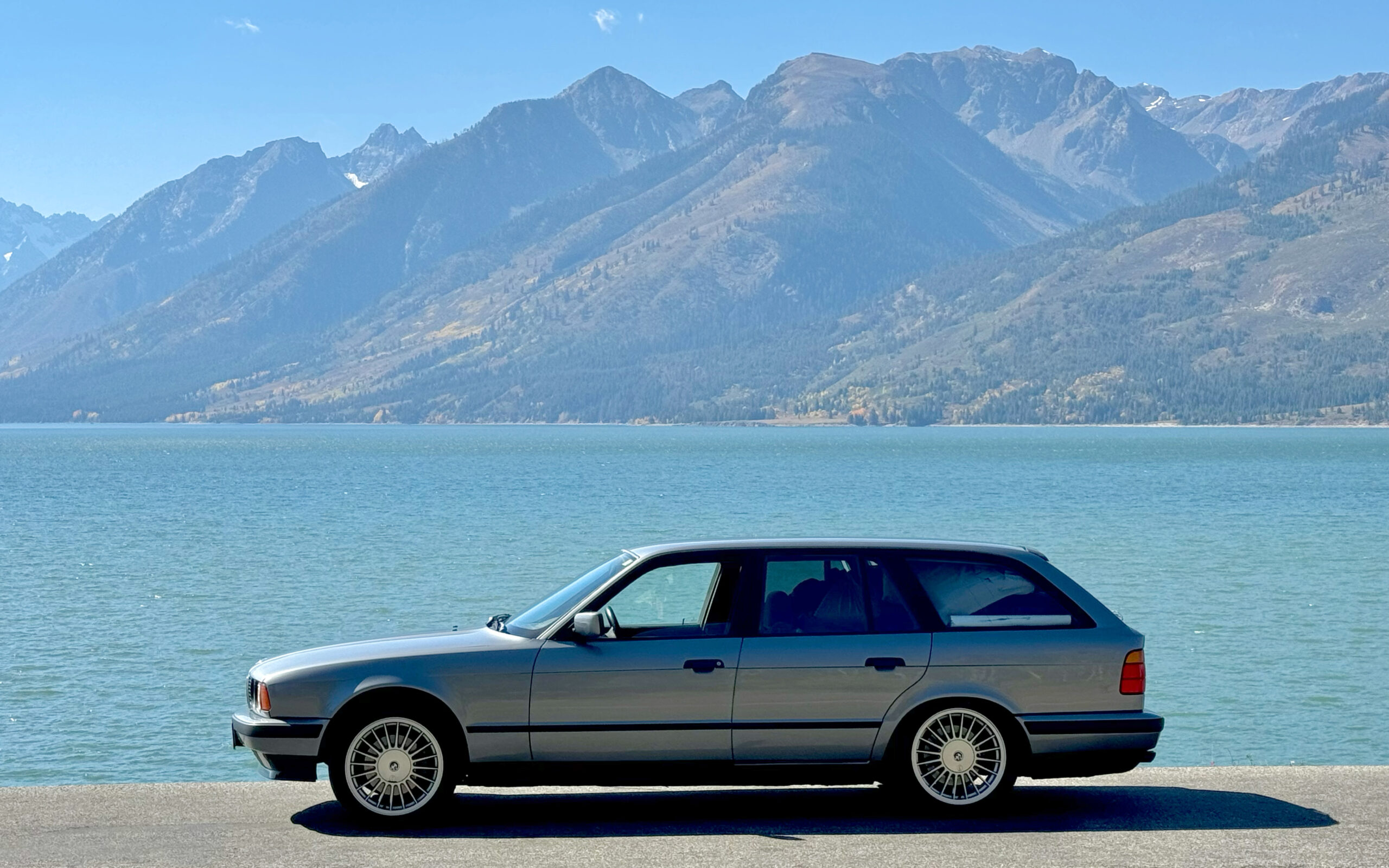One of the things on the punch list for the 183,000-mile 2008 Nissan Armada I bought as a tow vehicle / stuff hauler was dealing with banging and ox-cart-like ride emanating from the front. One of the nice things about buying this vehicle is that the main forum (ClubArmada.com) feels like a place where I actually like to spend time. This is in stark contrast to the forums I had to peruse when I owned the 2008 Chevy 3500HD Duramax dually, where I was always one mouse click away from stuff about rolling coal.
When I began searching for info on the front suspension issues, I learned that a) Everyone hates the OEM Tokico struts the vehicles are originally equipped with; they’re soft and don’t last long, b) It’s a double-wishbone steering-suspension setup, so unlike the MacPherson struts in our BMWs, the struts are comparatively easy to change (no connection to the steering or brakes), and c) You should pony up for the Bilsteins and not go for the “quick struts.” I was thrilled to find myself in another vehicular community that reveres Bilsteins, but… wait, quick struts?
I apparently had missed the memo, but a “quick strut” is something that comes as a fully-assembled unit with the strut cartridge, spring, upper perch and bushing, and all rubber bumpers and spacers, making it so you don’t need to use a spring compressor to compress the springs, slide them and the other components off, and reassemble them onto the new struts. On cars like our 2002s and E9s, and up through E30s, this doesn’t apply, as the strut housing is a life-of-the-car unit into which a strut cartridge slides, but beginning I believe with E36s, the strut cartridge and its housing became configured together as a single removable unit to which the steering knuckle beneath it bolts or clamps. So even on cars like ours with McPherson struts, if you look on eBay or Amazon for “BMW front quick struts,” you’ll see that these things are ubiquitous, cheap, and made by companies you’ve never heard of.
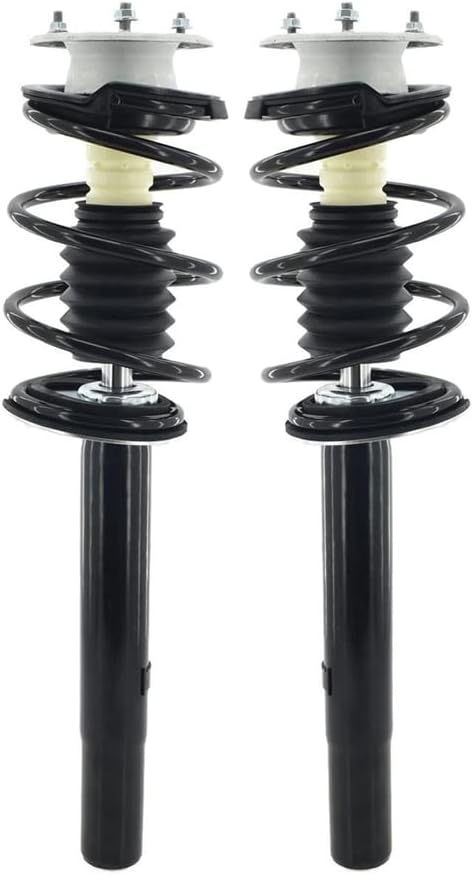
A pair of inexpensive and highly questionable E39 “quick struts” available on Amazon.
The gist of it on the ClubArmada forum was this: Sure, you can save yourself some time by removing the old assemblies and tossing quick struts in, but you get what you pay for both in terms of ride quality and longevity, so unless you’re selling the car and simply want to get out of the repair as quickly and cheaply as possible, if you want the thing to ride right, go for the Bilsteins.
Now, to go old school on you, I don’t need no stinking quick struts. Real mechanics compress springs. There’s this myth that it’s dangerous. Sure, if you try something stupid like doing it with hose clamps while you’re bent over it, the clamps can break and launch the upper bushing into your face, but with proper tools, it’s done routinely by DIY mechanics like me without an emergency room visit. I own three spring compressors—a pair of the old-style threaded claws, a hand-cranked orange monstrosity I bought directly from Michel Potheau himself after seeing the ad in the Circle Tire’s centerfold in Roundel magazine in the mid-1980s, and a newer one with two plates drawn together by a nut on the bottom that you put a ratchet on. I certainly wasn’t afraid of compressing springs. I found a pair of open-box Bilstein front struts on Amazon for a great price, and ordered the rest of the perch rubber and hardware.
Plus, I’ve always made carefully-considered decisions on both struts and springs. On 2002s, the go-to combination for many people is H&R Sport springs and Bilstein HD shocks and struts. On my E9 and Bavaria, I’ve used the Bilstein HDs but kept the stock springs. I like specifying these components myself. The idea of throwing in something where both the strut and the spring is of unknown brand, and where the sole determining factors are ease of installation and cost, is an anathema to me, especially on something like front suspension that you’re going to feel over every bit of road.
Quick struts. Feh.
When the new parts arrived, I jacked up the nose of the car, set it on stands, pulled the wheels, and began the removal process on the left front strut assembly. Unfortunately, as soon as I looked at it, I found that I was staring directly at a broken spring. I went around to the other side and found the same thing. Crikey, no wonder the front of the truck was banging.
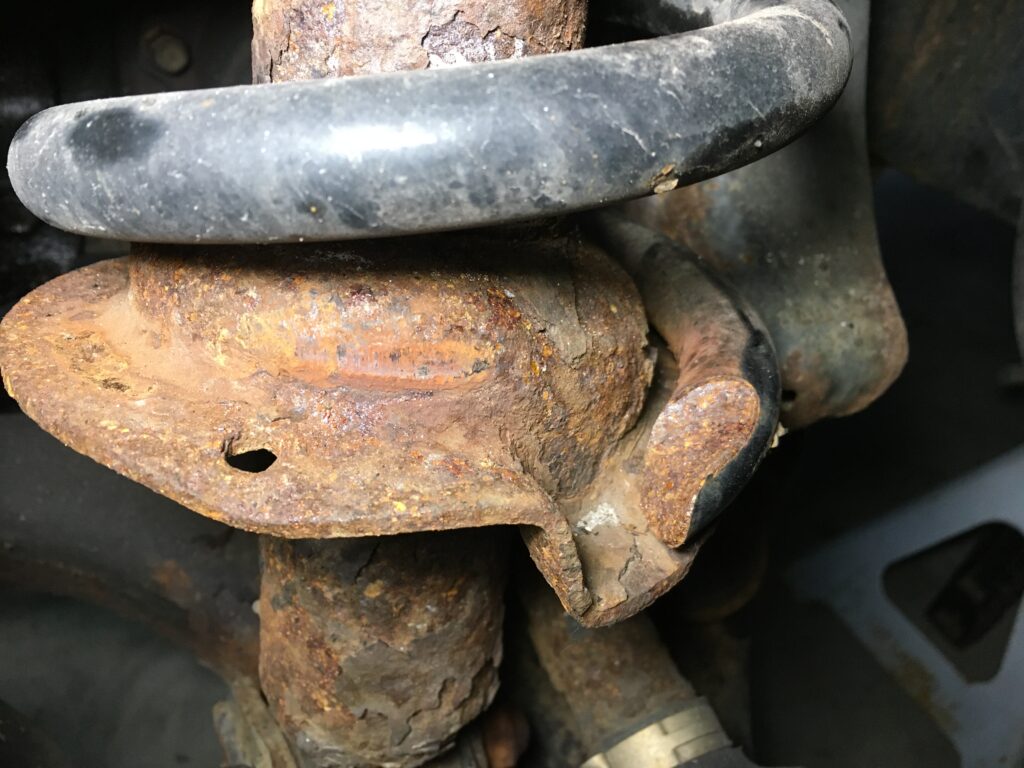
Unwelcome guest #1…
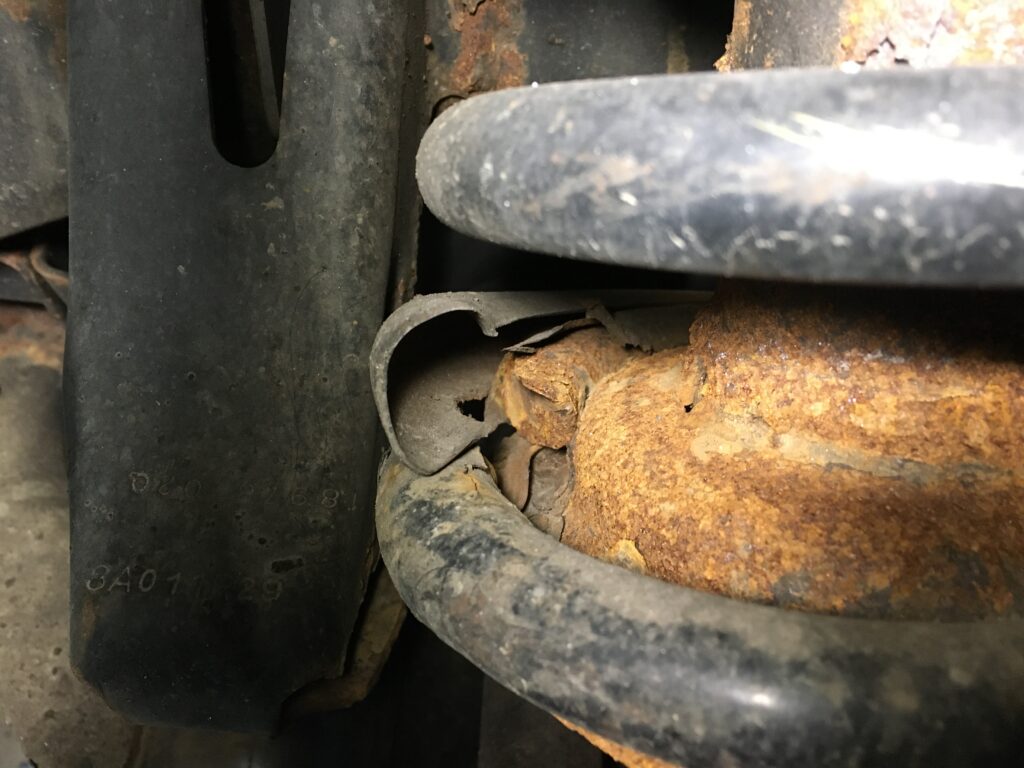
…and #2.
In terms strut removal, the broken springs didn’t matter, but obviously I needed new springs, and began to think that maybe this quick-strut thing wasn’t such a bad idea after all. I nearly returned the Bilsteins, but then found a supposedly OEM-equivalent set of Moog front springs on Amazon for $88 for the pair.
Ostensibly, removal of the strut assembly on a double-wishbone-suspension car is trivial, as the design means that the assembly is held in place by three nuts at the top (they look just like our familiar shock tower “hats,” but it’s just a circular plate, not a bushing with a bearing in it, because these aren’t MacPhersons so the strut assembly doesn’t rotate), and one nut and a bolt at the bottom just like a shock absorber. Unfortunately, as you can see from the pics, there’s rust on much of the exposed metal of this lifelong New England car. The nuts at the top aren’t that big (they’re just 14mm), but on both sides of the ar, the inner nut—the one that you actually can reach with a long extension from inside the engine compartment—was stuck fast. I didn’t expect that, I put an impact wrench on them, it rounded the corners, and suddenly I had a problem. I was eventually able to get them off with heat from the oxy-acetylene torch and by hammering a smaller socket onto them.
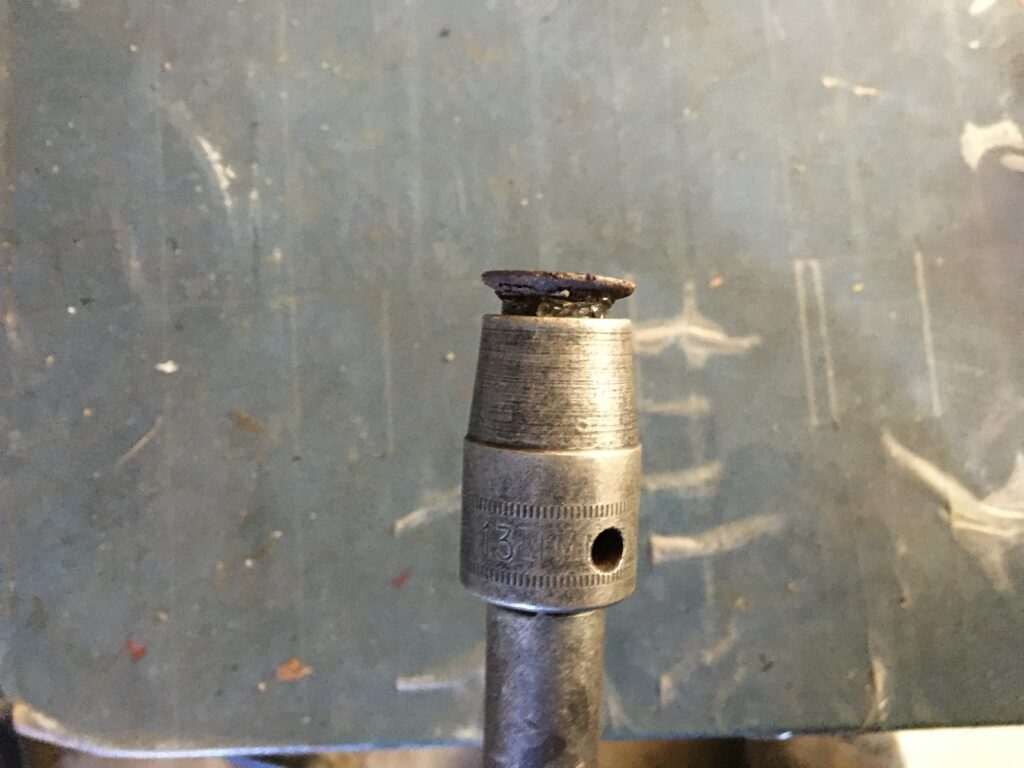
Success!
Having now purchased new struts, springs, and every bushing and spacer, I guess I kind of built my own “not-so-quick struts,” but I disassembled the old ones anyway because I was curious if I’d gotten it completely wrong. That is, I wondered if the struts themselves were fine and the rough ride and banging I was hearing was from the springs alone. Since both springs were broken, there was no tension on them, so I didn’t even need to compress them; I could just zip the top nut off with the impact wrench. I found that one strut was functional, but the other was completely blown. So, yeah, they needed to be replaced anyway. Had I known the thing needed both struts and springs, I might well have gone the quick-strut route, and really I should’ve known, as simply looking at the springs would’ve told me.
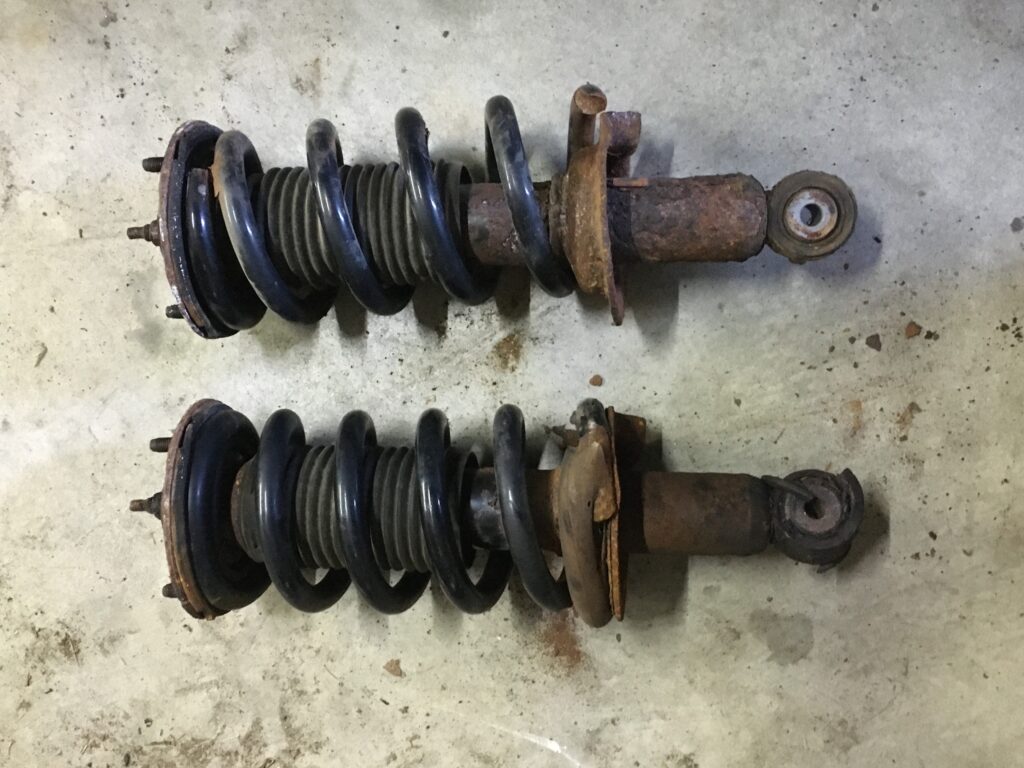
Out with the old…
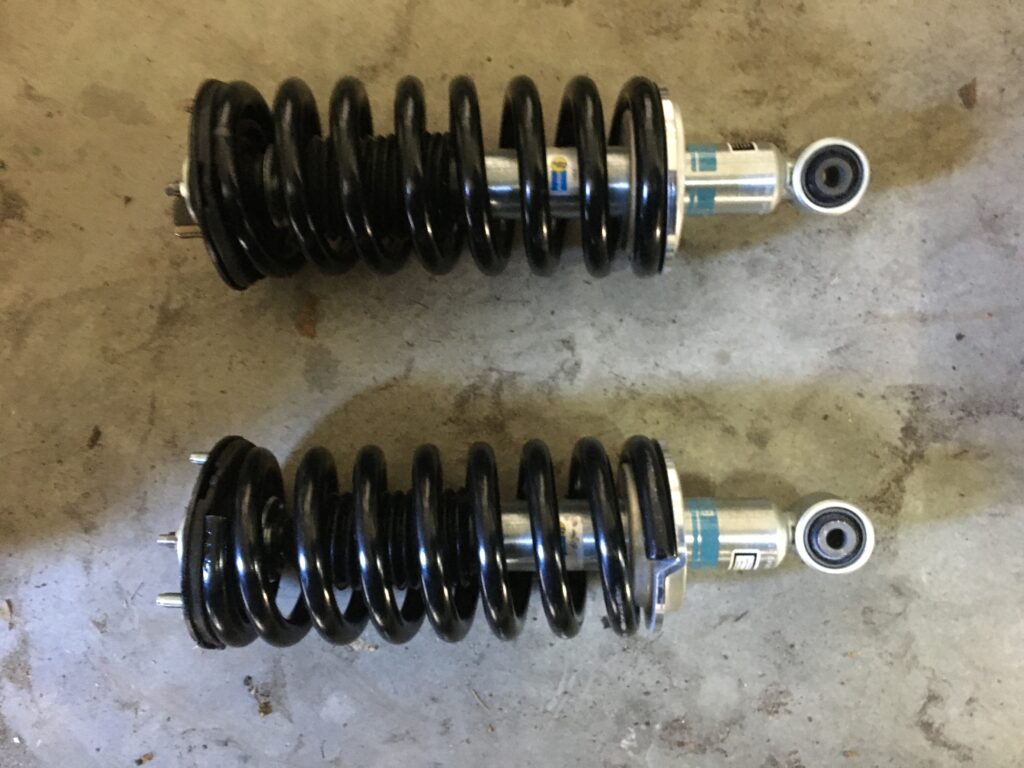
…in with the new.
With the new struts and springs installed, the Armada rides great, but it sits a bit higher in the nose than I’d like. Then again, it was previously sitting on two broken front springs, so the nose was artificially low. The “It’s a bit higher in the nose than I’d like” thing is familiar when installing Bilsteins in BMWs as well, as gas-pressure shocks exert upward force on the body of the car that fluid shocks do not. Hopefully with some time and miles on it, it’ll settle down a bit. Also, like the E39 wagon I used to own, the Armada has a rear self-leveling suspension, so I may be able to adjust the rear height sensor and raise the tail to get the car level. Fortunately, unlike the E39, the rear air springs aren’t the only upward-pressing component in the rear suspension—the Armada has conventional rear springs as well, so it’s not going to do the beached-whale-thing on me that my E39 did when the self-leveling system went south.
But more to the point, I’m getting the Armada closer to where it needs to be to do with I bought it for—tow home cars more interesting than an Armada.
Maybe something that needs front struts. And has broken springs.
—Rob Siegel
____________________________________
Rob’s newest book, The Best of The Hack Mechanic, is available here on Amazon, as are his seven other books. Signed copies can be ordered directly from Rob here.

